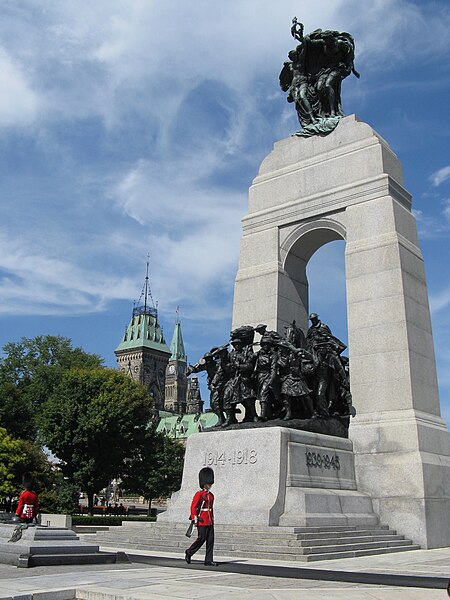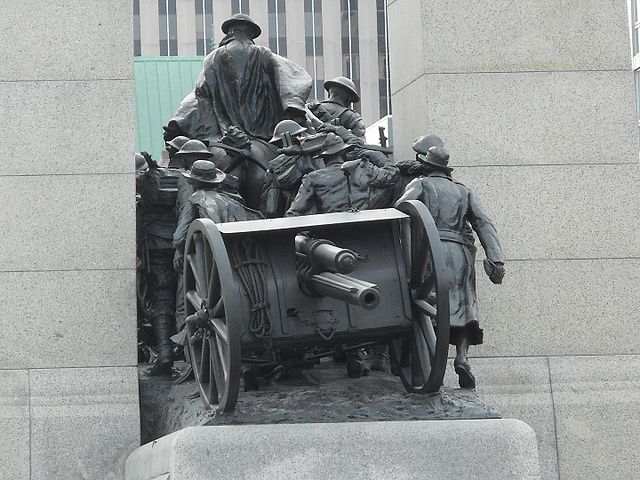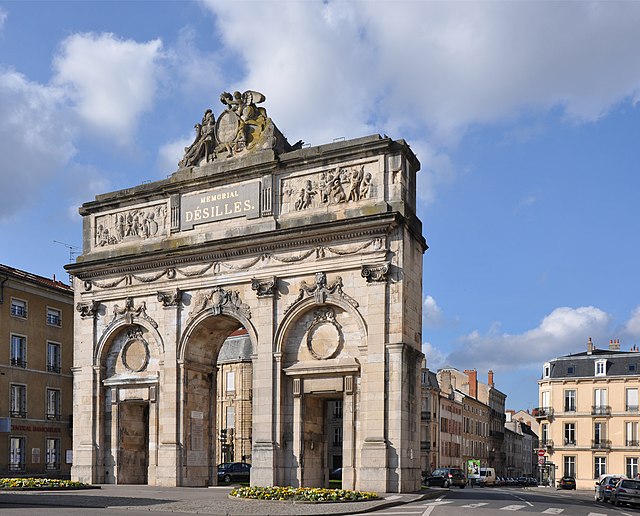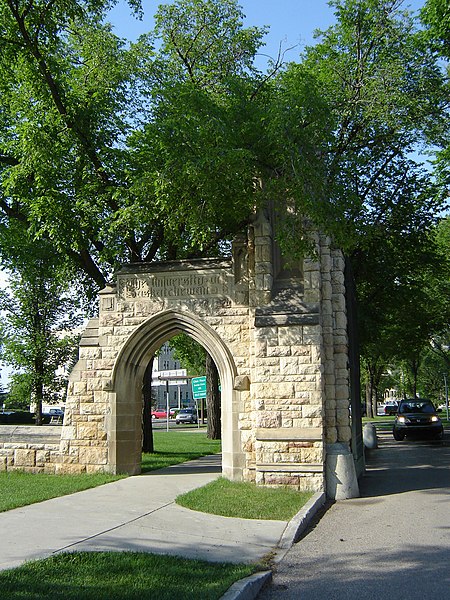National War Memorial (Canada)
The National War Memorial, titled The Response, is a tall, granite memorial arch with accreted bronze sculptures in Ottawa, Ontario, designed by Vernon March and first dedicated by King George VI in 1939. Originally built to commemorate the Canadians who died in the First World War, it was in 1982 rededicated to also include those killed in the Second World War and Korean War and again in 2014 to add the dead from the Second Boer War and War in Afghanistan, as well as all Canadians killed in all conflicts past and future. It now serves as the pre-eminent war memorial of 76 cenotaphs in Canada. In 2000, the Tomb of the Unknown Soldier was added in front of the memorial and symbolizes the sacrifices made by all Canadians who have died or may yet die for their country.
Two Ceremonial Guard sentries at the National War Memorial in Ottawa
Panoramic view of Confederation Square looking north, with the National War Memorial at its centre
Figures viewed from the rear with QF 18-pounder gun
Figures viewed from the front
Memorial gates and arches
Memorial gates and arches are architectural monuments in the form of gates and arches or other entrances, constructed as a memorial, often dedicated to a particular war though some are dedicated to individuals. The function, and very often the architectural form, is similar to that of a Roman triumphal arch, with the emphasis on remembrance and commemoration of war casualties, on marking a civil event, or on providing a monumental entrance to a city, as opposed to celebrating a military success or general, though some memorial arches perform both functions. They can vary in size, but are commonly monumental stone structures combining features of both an archway and a gate, often forming an entrance or straddling a roadway, but sometimes constructed in isolation as a standalone structure, or on a smaller scale as a local memorial to war dead. Although they can share architectural features with triumphal arches, memorial arches and gates constructed from the 20th century onwards often have the names of the dead inscribed on them as an act of commemoration.

Menin Gate, Ypres, Belgium
Porte Désilles, Nancy, France
Brandenburg Gate, Berlin, Germany
University of Saskatchewan Memorial Gates, Saskatoon, Saskatchewan, Canada








